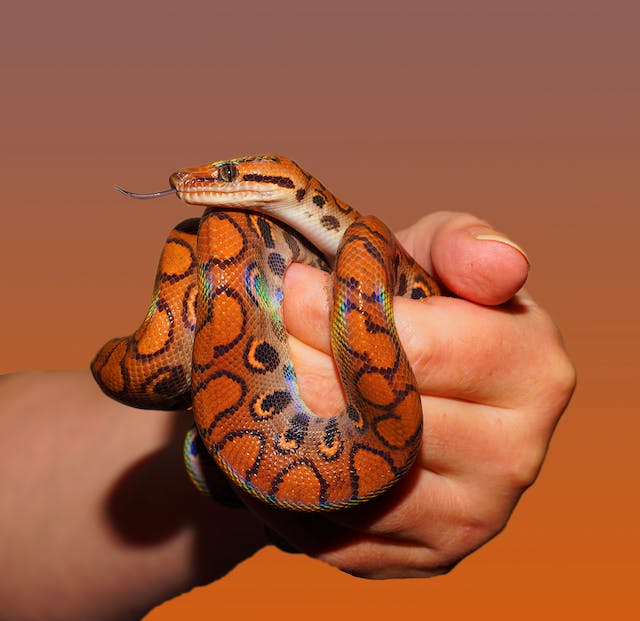
Quick Guide to Microchipping for Reptiles and Lizards
You’ve probably heard of microchipping your dog or cat, but did you know you can microchip your reptile pet as well? Losing your pet is a scenario no pet owner wants to be in, but it’s best to have measures in place in case this scenario does happen. A simple procedure like microchipping can give you one more way to find your animal when it goes missing. But how can you microchip your reptile, and is it safe for them? We’ll talk about this and more in our quick guide that gives you everything you need to know about the reptile microchipping process. Read on to learn more, and make sure to post on PawBoost to help find your reptile if it is missing!
Is the Process Safe?
Microchipping is safe for most pets, even reptiles! The microchip is a tiny device, roughly the size of a grain of rice, that does not pose any threat to your reptile friend. While there is always a slight risk associated with any medical procedure, the vast majority of pets are safely microchipped without complications. With that being said, it’s essential to seek out an experienced reptile veterinarian when opting for this procedure. They will know the best place to insert the microchip and will be able to determine if microchipping is a good solution for your pet. While many reptiles can be safely microchipped, not all can. We’ll touch more on that later.
Generally, the common and safe procedure of microchipping offers benefits that outweigh the small risks that come with medical procedures. With a microchip, you have a better chance of reuniting with your pet if it goes missing. Ultimately, the choice is up to you, but it’s worth having a conversation with your vet to weigh your options.

How Does It Work?
Microchipping for reptiles works in the same way that it does for other pets. A small microchip is implanted under the skin with a needle or implant gun. The small incision area is then sealed and the area heals, completing the microchipping process. This process is quick and painless for the reptile, and now you have the benefit of having an extra layer of security when it comes to tracking down your lost pet.
Each microchip contains a unique identification number that can be scanned. When a lost reptile is found, a vet or animal shelter can use this device to find the contact information of the owner in a microchip database. From there, the owner can be contacted so they can come and reclaim their pet. This can also help with cases where there is a dispute over the ownership of a pet.
Can I Microchip My Reptile?
Microchipping is not limited to dogs and cats. You can absolutely microchip your reptile. Generally, the procedure is safe for snakes, iguanas, turtles, tortoises and several other reptiles. That said, not every reptile will be a suitable candidate for the microchipping process.
Generally, reptiles that are too small or reptiles with certain health conditions may not be suitable for microchipping. Also, the timing of microchipping matters for some animals. For example, you shouldn’t microchip a turtle before their migration period. This is why it’s crucial to have an experienced reptile vet perform the microchipping procedure, so they can do it safely and ensure it’s the right choice for your pet.
With that in mind, let’s talk about the microchipping process for different reptiles.

Snakes
Snakes are very popular reptile pets, but they can also be very good at escaping their enclosures. If your snake escapes your home, it’s good to have them microchipped. The microchip is typically placed on the left-hand side of the snake, roughly twice the length of its head from the tip of the nose. From there, the incision is sealed with a glue that allows the scales to heal. Most snakes can be microchipped, but it may not be safe for smaller species of snake.
Iguanas
Iguanas are fairly large lizards and it’s typically safe to have them microchipped. For most iguanas, the microchip will be placed in their back left leg. Other larger lizards will also have the microchip placed in the same location. If you’re microchipping a smaller lizard, it may be placed in the skin on their left side, rather than in the leg. But we’ll talk about that more in a bit.
Turtles and Tortoises
Turtles and tortoises make wonderful pets, but they can also sometimes wander off. That’s where microchipping can help. It’s important to note that microchipping can only be done once your shelled friend’s plastron (the shell’s underside) measures at least 100 mm in length. Once they’ve reached this size, the microchip will typically be placed in the back left leg. It’s also important to note that your turtle or tortoise needs to be microchipped at least several weeks before they hibernate, otherwise, they may not have the proper time to heal and the site could get infected. As mentioned, this is something that an experienced reptile vet should know.
Smaller Animals
If you own a smaller reptile, such as a gecko or a chameleon, you may be wondering if microchipping is right for them. The answer is — it depends. If your lizard or small reptile is big enough to be safely microchipped, then it shouldn’t be a problem. However, sometimes an animal is too small for a microchip to be a safe and viable solution. Also, sometimes an animal is too young for the microchip to be implanted. You may have to wait for them to get bigger and older before you’re able to get them their microchip. That said, microchipping is safe enough to be implanted in a wide variety of reptiles of all shapes and sizes. Your best option is to speak with your reptile vet and determine if microchipping is right for your reptile.

PawBoost Is for Missing Reptiles, Too!
Losing your pet can be a devastating experience. While microchipping does help people reunite with their pets, it’s not a guarantee. Microchips don’t track pets, they only make it easy to find the owner if the pet is turned in somewhere that can scan microchips.
If your reptile goes missing, you will want to take more steps than relying on your microchip to find them. That’s where PawBoost comes in. PawBoost is a free platform that offers numerous tools to reunite missing pets with their owners.
When you post a missing pet on PawBoost, the post is added to our lost & found database, pushed to your local PawBoost Facebook page, sent to our mobile app users and sent to our email subscribers. Additionally, there is a tool to make physical lost pet flyers to hang in your neighborhood. PawBoost even offers various premium paid features to raise local awareness about your missing reptile even further.
Try PawBoost’s free tools and get the best chance of finding your missing pet.
